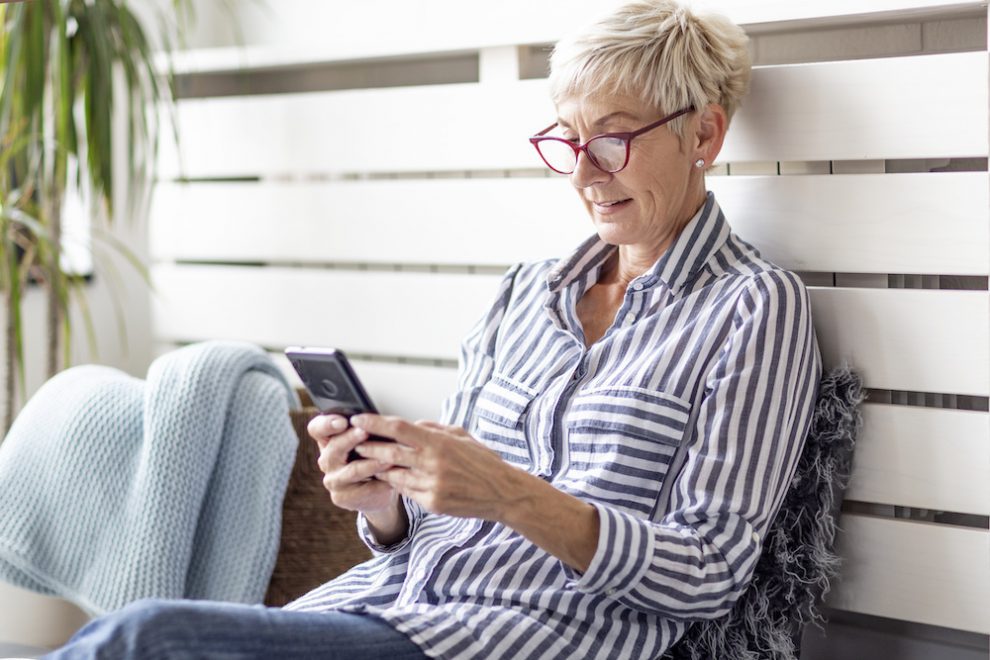As technology changes how we interact, digital mental healthcare is new territory. Could your smartphone become your therapist? It offers the potential to help people who need it, but there has to be a focus on trust.
The therapeutic alliance, the relationship that develops between a therapist and a patient, is often key to the positive outcome of psychological therapy for many people.
READ MORE HEALTH RELATED ARTICLES: Camping trips proven to be beneficial for mental health
Like any successful relationship, trust is crucial. But would you trust an algorithm with your mental wellbeing?

Mental healthcare has increasingly started to adopt digital technologies and offer therapeutic interventions that may not necessarily involve human therapists. So, defining the therapeutic alliance between a patient and a therapist in digital mental healthcare is new territory.
It also raises many new questions. What is the nature and role of the therapeutic alliance in digital mental health solutions? Does the traditional notion of a quality relationship between client and therapist hold true in the digital environment? And what new issues emerge?
The term ‘digital therapeutic alliance’ is a broad one that can apply to a range of types of digital mental health care.
The most straightforward of these is the alliance between patient and therapist, as is the case where sessions are conducted via e-mail, online chat or video-conferencing.
Research suggests that the therapeutic alliance can also be achieved in online counselling in the same way that it is in face-to-face therapy, and that these online interventions can have a similar effect to face-to-face therapy.
At the extreme end of the spectrum is the potential engagement between a human patient and an AI-driven therapy agent.
This could simply be a mental health chatbot (which already exist), but technology could take us all the way to robot or virtual human therapists, eventually mimicking the responsiveness and intuition of a human therapist.

These AI-driven therapy agents, from the relatively simple to the more complex, raise a plethora of interesting questions that includes defining the nature of the therapeutic alliance between human patient and AI therapist.
Advancements in internet and smartphone technologies have given rise to the development of web platforms and mobile apps offering various forms of therapy content and exercises delivered in a digital format, without the presence (or with limited presence) of a human therapist.
These systems often adopt tools and ideas that have been established with Web 2.0.
For example eOrygen, the digital mental health group we work with, have developed the Moderated Online Social Therapy (MOST) framework.
The MOST web platform integrates Facebook-style social networking, psycho-educational therapy units, and a forum-like feature that provides a place to talk about and crowdsource solutions to personal issues.
Systems like these are intended to complement and supplement rather than replace clinical mental health care, and many also involve the online presence of clinical and fellow patient moderators.
But often key to successful therapy is the patient-therapist therapeutic alliance.
One, until recently, under-examined point in determining the efficacy of digital mental health apps, has been if and to what extent a user might develop a therapeutic connection to a mental health app.

Even if such a digital therapeutic alliance doesn’t directly predict treatment outcomes, its formation may support the user in persisting with the app rather than prematurely discontinuing its use.
Given the implications this question has for successful digital therapy outcomes, our team started to investigate this topic in more detail.
In our recent study, we explored the therapeutic alliance between users and our MOST framework. We analysed interviews conducted with participants of an application called Meridian, which is a trial of the MOST system aimed at reducing stress in carers of young people diagnosed with mental health disorders.
And it seems that people can develop a therapeutic alliance with an online support system like MOST, by relating to the online system through the development of shared goals.
We found that people involved responded to automated, personalised feedback from the system.
For example, the system may suggest that they ‘draw on their strengths’, which has identified the personal strengths that person had inputted, and it then suggests ways in which they could act on those strengths.
Some participants felt that the system allowed them to develop self-competence, an important factor in establishing a therapeutic alliance.
One person commented, for example, that the automated elements of the system “allow[ed] me to be able to assess myself …. The fact that I could get information, learn more ideas. It gave me more focus, more ideas, more support than what I could have gotten.”

But while technology can have benefits, the relationship we have with our devices, particularly our smartphones, can also cause issues.
For example, problematic mobile phone use and smartphone addiction are gaining some recognition as real disorders. There’s even a reported phenomenon that goes by the neologism nomophobia, a portmanteau derived from NO MObile PHone PhoBIA.
In developing a tool that could be delivered through smartphones, the nature of an individual’s relationship to their mobile phone could also influence their engagement with and, ultimately, whether the digital therapy they receive is effective.
All of these user-app connections, both positive and negative, could all help influence the digital therapeutic alliance.
So, although technology is changing the way we interact, the therapeutic alliance between a therapist and a patient remains integral to the success of mental health apps and other digital mental health systems.
And defining what any future digital therapeutic alliance looks like, must keep the focus on trust and efficacy in order to really help people who need it.
“This article was first published on Pursuit. Read the original article.”





















[…] Could your smartphone be your therapist? […]